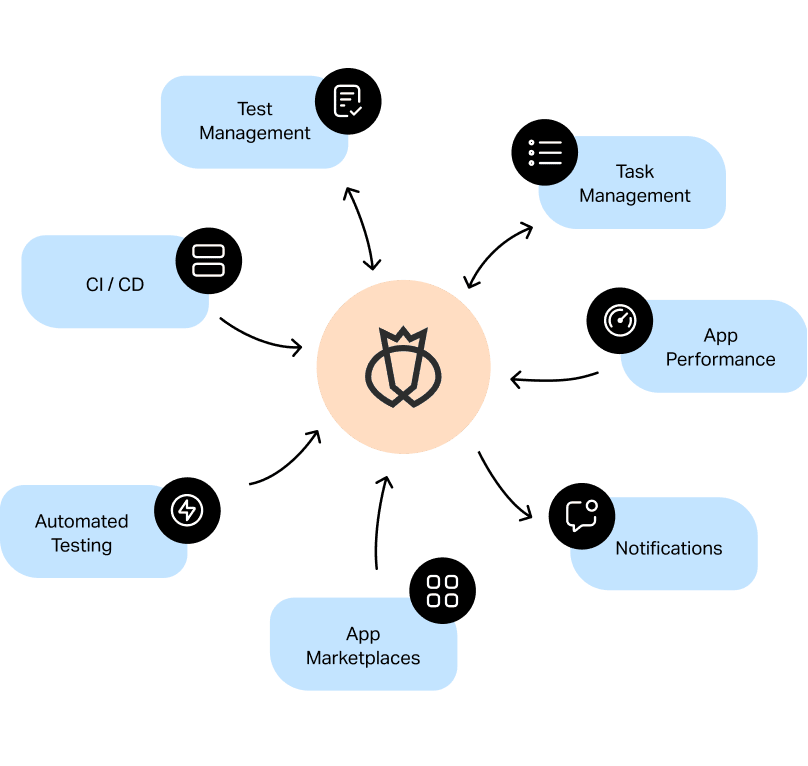The Future of Software Advancement: Harnessing the Possible of Automation Testing for Faster, Extra Trustworthy Releases
The potential benefits of automation testing are substantial, appealing not just to speed up launch cycles however additionally to improve the total top quality and consistency of software program products. In a landscape where speed and precision are critical, using the capabilities of automation screening stands as a critical technique for remaining in advance.
The Power of Automation Evaluating
In the realm of software growth, the execution of automation testing has confirmed to significantly improve efficiency and quality control processes. By automating repeated and time-consuming manual testing tasks, software application teams can streamline their testing efforts, decrease human mistakes, and speed up the total growth lifecycle. Automation testing permits the quick execution of test instances across different atmospheres and configurations, supplying developers with quick responses on the quality of their code changes.
Among the essential benefits of automation screening is its ability to raise test coverage, making certain that even more features and functionalities are thoroughly examined. This extensive screening approach assists determine defects early in the advancement cycle, minimizing the likelihood of expensive insects reaching production. Automation screening advertises constant integration and continual shipment practices, making it possible for teams to release software program updates a lot more frequently and dependably.
Accelerating Release Cycles
The velocity of launch cycles in software application development is crucial for remaining competitive in the quickly developing tech landscape. Shortening the time in between releases enables companies to react promptly to market needs, include customer comments promptly, and exceed competitors in delivering innovative attributes. By adopting active techniques and leveraging automation screening devices, growth teams can simplify their procedures, recognize insects earlier, and make sure a better item with each release.
Increasing release cycles also allows software program companies to keep an one-upmanship by swiftly resolving safety vulnerabilities and adapting to transforming regulatory requirements. Moreover, constant releases assist in building customer trust and loyalty as users take advantage of continual enhancements and insect solutions. This repetitive approach fosters a society of continuous improvement within development groups, urging collaboration, innovation, and a concentrate on providing value to end-users.
Making Sure Regular Quality Control
Amidst the increased release cycles in software development, maintaining constant quality control becomes paramount for ensuring that each model satisfies the highest possible criteria of performance and integrity. Consistent quality control includes a systematic approach to testing and evaluating software program to determine and fix any type of problems or issues quickly. To attain this, software program advancement teams should establish durable QA procedures that are integrated throughout the growth lifecycle. This includes specifying clear high quality standards, performing thorough testing at each stage of growth, and leveraging automation testing tools to streamline the procedure.
Conquering Common Testing Difficulties
Attending to and dealing with typical testing challenges is vital for making sure the efficiency and efficiency of software development processes. One common challenge is the absence of detailed test insurance coverage, where testers may forget particular circumstances, causing potential bugs getting on the end product. This issue can be minimized by complete test planning, integrating varied testing strategies, and leveraging automation testing to improve protection. view it now Another usual difficulty is the maintenance of test manuscripts, especially in dexterous environments where regular modifications occur. Examination manuscript upkeep can be structured by making use of durable examination automation structures go to this website that offer simple manuscript modifications and updates. Furthermore, working with screening efforts across different teams and departments can pose a difficulty because of communication gaps and differing top priorities (automation testing). Carrying out clear interaction networks, developing standard processes, and cultivating collaboration with devices like issue trackers and task management systems can help overcome this difficulty and make sure smooth screening coordination. By proactively addressing these difficulties, software application development teams can enhance the high quality and dependability of their launches.
Carrying Out Automation Examining Methods

Once the examination situations are chosen, teams need to spend time in designing durable examination manuscripts that are maintainable, multiple-use, and scalable. Cooperation in between stakeholders, resource programmers, and testers is crucial to ensure that the automation screening aligns with the overall task goals and needs. Continual combination and release pipelines can even more streamline the automation testing process by immediately causing examinations whenever new code is dedicated. By taking on automation testing approaches, software application advancement teams can accomplish much faster checking cycles, higher examination insurance coverage, and eventually deliver even more trusted software releases.
Verdict
Finally, automation testing gives an effective tool for speeding up release cycles, guaranteeing consistent quality assurance, and getting over common screening challenges in software application advancement. By utilizing the capacity of automation testing methods, organizations can accomplish much faster and more dependable launches. automation testing. Embracing automation screening is essential for staying competitive in the hectic globe of software program growth

In conclusion, automation testing provides an effective tool for increasing launch cycles, making sure consistent high quality guarantee, and overcoming common testing challenges in software program development.